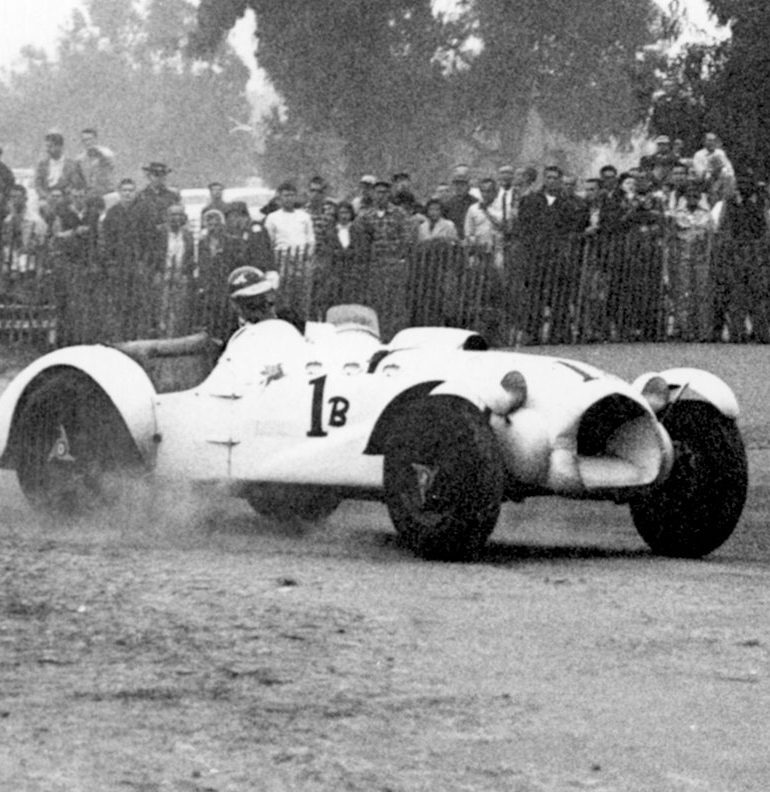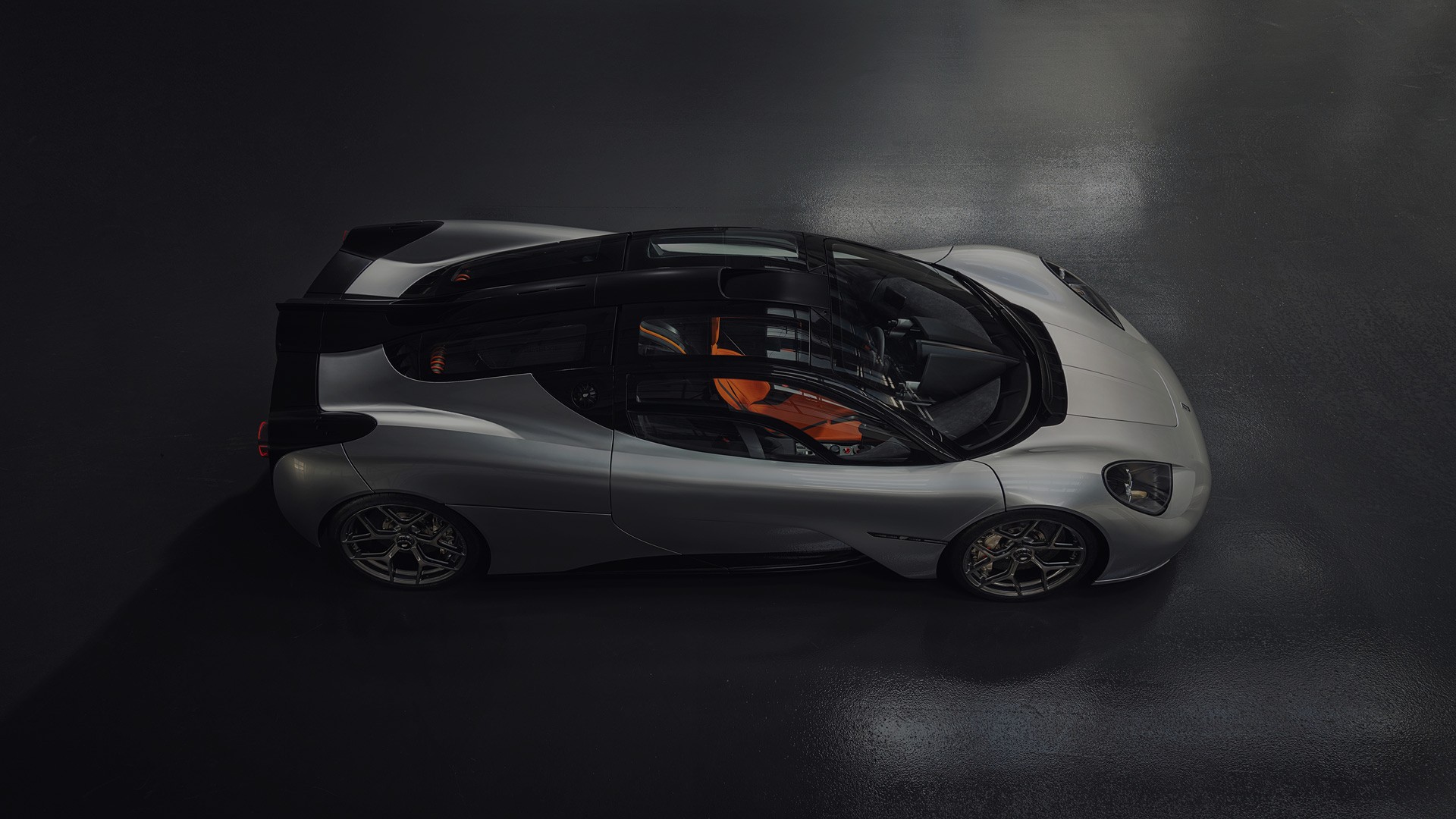My father, Tom Bamford, first got involved in motor sport in his late teens when he bought an Ariel motorcycle in the late ’30s that he had to keep down the street at a gas station because my grandparents didn’t want him to own it. One day he was following along behind a “Hare & Hound” race. This is a form of motorcycle racing where one motorcycle, the “hare” would take off down an open trail. A few minutes later all the other racers or “hounds” would take off to try to catch him. This particular day the hounds missed a turn and went in the wrong direction. Young Tom was far enough back so that when the dust cleared, he was able to see what happened. He took off after the hare and earned his first trophy! We have a picture of him sitting on that motorcycle with a big smirk on his face, just wearing a sweater, no helmet or goggles, holding the trophy.
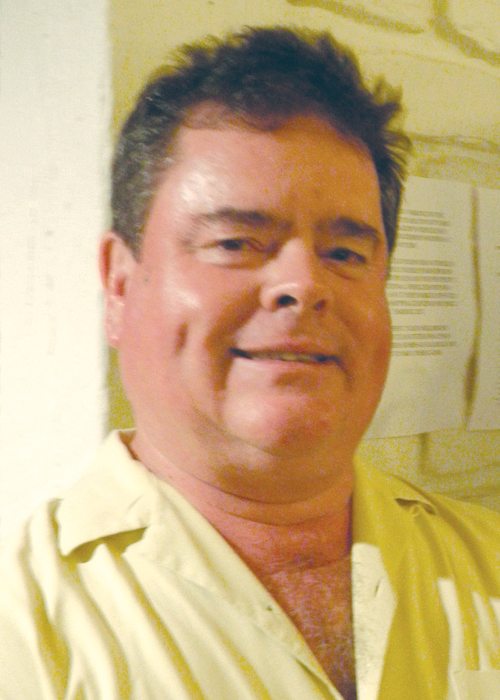
I recently came across an album with photos of four or five different Ariels he apparently owned. He liked the Red Hunter singles and Square Fours. He rode motorcycles on the local dry lakes with guys like Ernie McAfee, Phil Hill, and others who would get together out there on Sundays. I have a picture of him on a Square Four on El Mirage dry lake (now part of Edwards Air Force Base, where the space shuttle lands when it’s in town). There’s also a great one of him flat-out on an Ariel single going across the beach, right at the waterline like something you’d see at Daytona, only it’s in Malibu.
His transition from two wheels to four probably started when he went to work for Gough Industries, the MG distributor, or International Motors, with people like Phil Hill and Ken Miles back when the MGs were first coming over from England. It’s hard to say exactly when, except that some of the people with whom he raced Speedway motorcycles also got into sports car racing about the same time. Of course, you could race motorcycles professionally and be paid for it, but at the time you could not do that in sports cars, due to the sanctioning club rules. There were, however, wealthy sports car owners, who wanted to hire drivers and did; they just had to do it on the sly.
About this time, he met up with movie actor Keenan Wynn, probably while out riding motorcycles. They became good friends and decided it would be a good idea to open a sports car and motorcycle repair shop across the street from the Warner Brothers studio gate. They named their shop British American Motors.
I would imagine it was at the time of British American Motors in the early 1950s that my dad started racing cars. I’m not sure what cars he raced before the ex-Tommy Lee Alfa. [Featured on pg. 34]
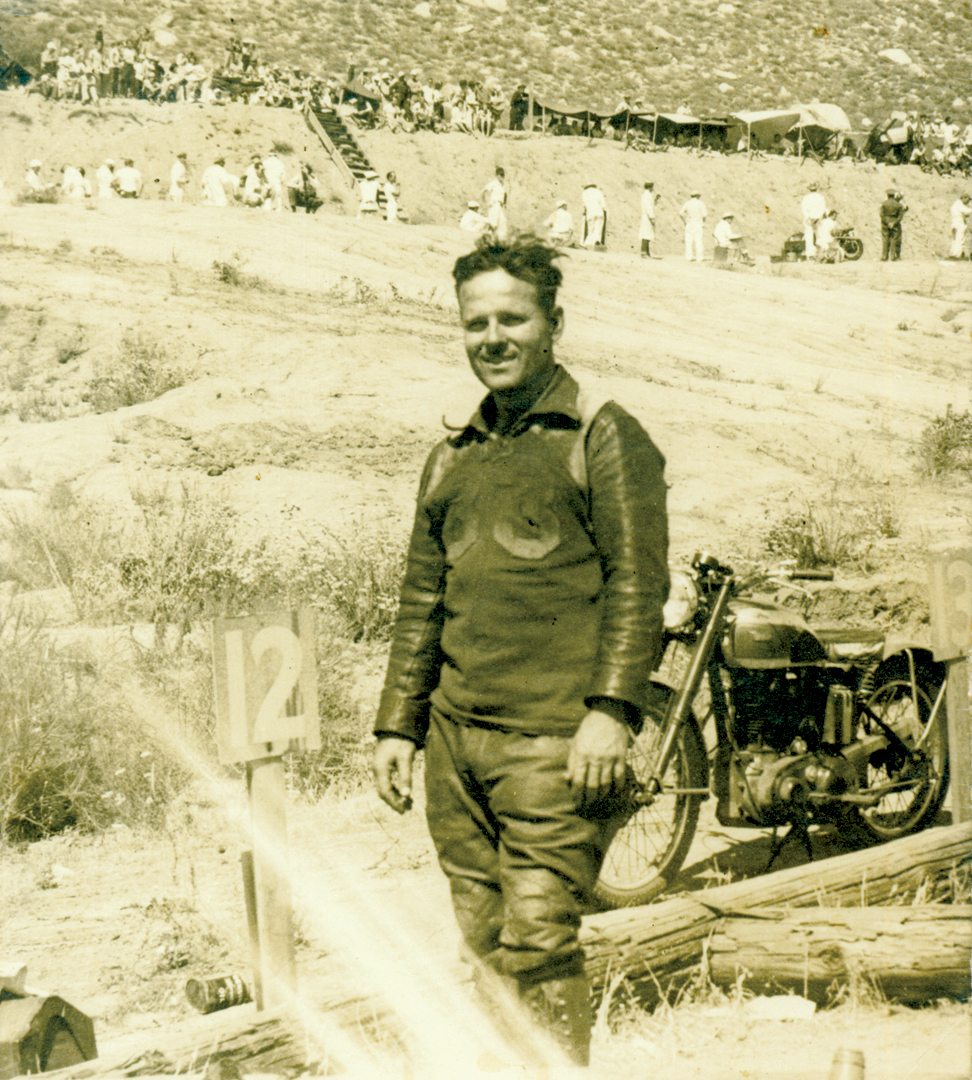
Tommy Lee was the son of Don Lee, Los Angeles’s Cadillac dealer, owner of radio stations in the ’20s and ’30s with employees like Frank Kurtis and Harley Earl. Don Lee was a very wealthy man who collected the finest European touring and racecars. When Don passed away, Tommy inherited the collection. The Alfa my dad later owned started life as an 8C touring car. The original engine, for some reason, had expired, and the car was sold off. At this time it was re-bodied as a two-place sports car using a Mercury V-8 and current Indianapolis technology. Around this time, the car came into the possession of Keenan Wynn and my father.
After a “catastrophic failure” with the Mercury flathead in the Alfa with my dad driving in ’52, he installed one of the “big” Cadillac engines. At the time the Cad engine was the V-8 of choice and the Cad-Allards were winning everything that year. In ’53 we bought a house in Woodland Hills with a lot big enough for horses and a quarter midget track for my sister and me! The Alfa had to go. Before he sold the Alfa in ’53, Dad wanted to go for one last drive, so my sister and I—I would have been 3 at the time and my sister was 9—climbed in and off we went! We were in old Woodland Hills, so a ride around the block was a really long block. It was getting dark, and the car didn’t have a lot of lights, and didn’t have any upholstery either! I’m sure it didn’t have seat belts, but it was fun for the driver and me! I remember sliding sideways a lot. Between the open exhaust and my sister screaming in my ear, it was really loud. That was a memorable moment! I’ve been told the guy who bought it just drove it over to the muffler shop, had mufflers put on it, and took off for Tucson where the Alfa sat in a barn for the next 50 years.

After the Alfa, Dad switched to a Cad-Allard. The Allard belonged to a local physician, but this is the car that people most remember Dad racing. In addition to the Allard, he also drove a TR2 a couple of times and a Ferrari that, I believe, belonged to Sterling Edwards. I have a picture of him driving that Ferrari at Hansen Dam.
Some time prior to ’56 he went to work for Ernie McAfee Engineering after he and Keenan Wynn closed British American Motors. When Ernie McAfee left to race at Pebble Beach in 1956, Dad was left in charge. After Ernie’s fatal crash, Bill Doheny, who financed Ernie McAfee Engineering, told my dad he could remain as General Manager, but would have to quit racing because he didn’t want to lose any more friends that way. So, Dad hung up his helmet. It was a really difficult choice for him to make because he loved racing and he wanted to be a paid professional, but he had a new family, he’d lost a lot of friends, and this was a great career opportunity.
In the 1960s Dad had the opportunity to do stunt driving for the studios, in movies like Grand Prix and the Love Bug. He also drove in a couple of Elvis Presley movies, Spinout and Viva Las Vegas. It was always a group of the same drivers. Carey Loftin, a close friend to Max and Ina Balchowsky, was one of the best stunt coordinators in Hollywood. His specialty was automotive stunts, and he would hire the people he knew and trusted. That’s how my dad got the studio work.
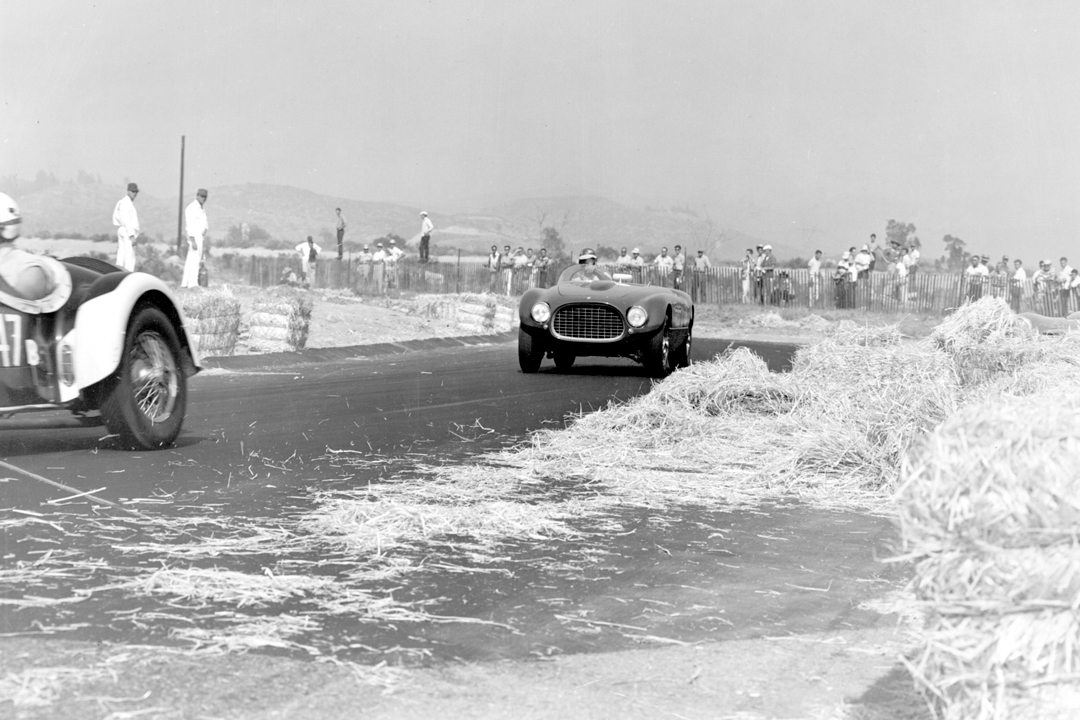
Photo: Bamford Collection
I remember Carroll Shelby coming in with the first Cobra, right after he’d gone to Chevy with it and they turned him down. He was going to pull the Chevy engine out and put a Ford in it. My dad told him, “Nah, Ford won’t come up with any money. They (like all of Detroit at that time) didn’t like the carnage that was going on; you’re wasting your time.”
At that time, all the movie stars, and anybody and everybody drove down that stretch of the Sunset Strip—right by McAfee’s dealership. I’m sure that’s why they picked it as the spot for the shop. Of course, at that time everything was built in L.A. and came out of L.A., so some afternoons my dad would say, “Come on, let’s go for a ride,” and we would go over to Troutman and Barnes or Shelby-American. I saw some great cars back then.


